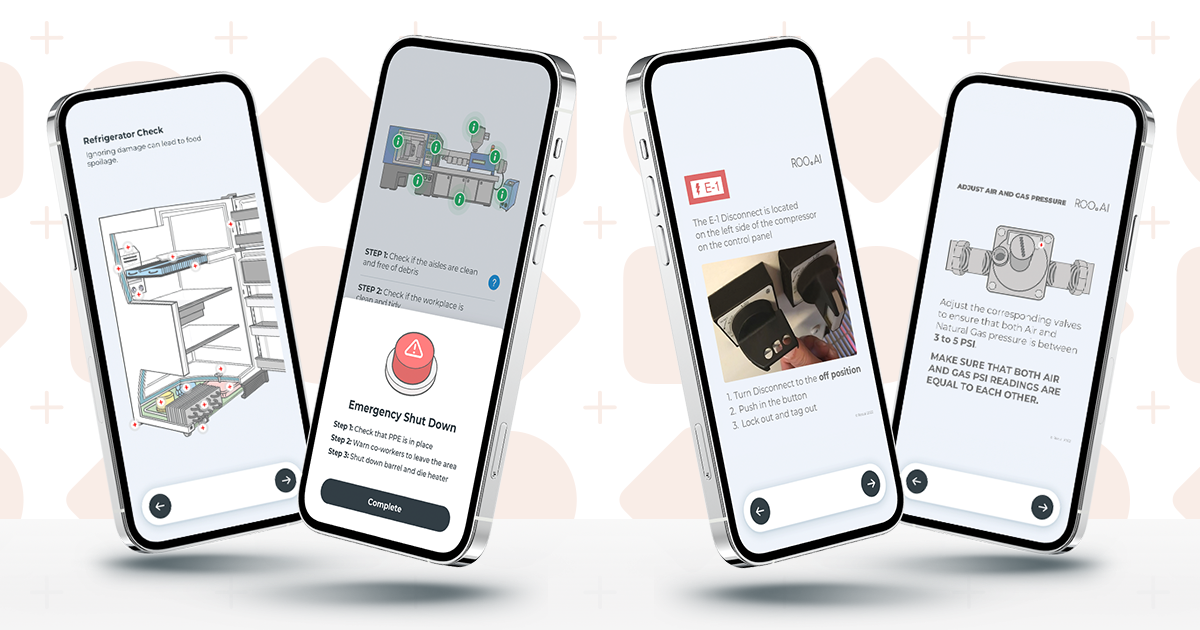Navigating the challenges of digital transformation in manufacturing is no easy feat, but the potential benefits make tackling these obstacles well worth the effort.
The manufacturing industry is undergoing what can only be described as a seismic shift. The most tech-savvy manufacturers are transforming everything from core manufacturing processes to supply chain management using advanced digital solutions, such as the Internet of Things (IoT), big data, and cloud computing.
However, not all companies find it equally easy to embrace digital transformation in industrial manufacturing.
What Is Digital Transformation in Manufacturing?
Digital transformation in manufacturing is the process of adopting and integrating digital solutions into the manufacturing ecosystem.
At the core of digital transformation in manufacturing is the concept of Industry 4.0, which refers to the fourth industrial revolution. This revolution builds on the foundation of automation and computerization from previous industrial revolutions. It takes manufacturing to new heights by connecting machines, products, and people through digital networks. As a result, Industry 4.0 manufacturers can harness real-time data to:
- Increase efficiency
- Make smarter decisions
- Reduce costs
- Improve quality control
- Quickly adapt to changing market demands
- Gain a competitive edge in the market
According to Gartner, 80 percent of manufacturing CEOs are increasing digital technology investments to counter current economic pressures, including inflation, scarce talent, and supply constraints. For their investments to yield the desired outcomes, manufacturers must overcome the following challenges of digital transformation in manufacturing.
1. Change Is Difficult
Perhaps the most significant challenge associated with digital transformation in manufacturing is the fact that change is always difficult—especially when it requires the whole manufacturing process to adapt to a new way of thinking. Both frontline workers and middle management may be hesitant to abandon familiar workflows and legacy systems in favor of unfamiliar digital technology.
To overcome this challenge, manufacturers need to prioritize communication and provide all employees whose day-to-day tasks are affected with the necessary support and training. One effective solution is to deliver clear instructions in context and at the point of need using modern next-generation digital assistance tools with support for visual guidance. Such tools help ease the transition for employees, and they can also be used to collect data and analytics on employee performance.
2. The High Initial Cost of Digital Transformation
Another major hurdle in the journey toward digital transformation in manufacturing is its high initial cost. Small and medium-sized manufacturers are particularly reluctant to take the plunge because they don’t have the same economies of scale or access to funding as larger manufacturers.
However, it’s crucial to remember that the cost of not investing in digital transformation could be far higher than the initial investment required. In fact, not investing could even jeopardize a manufacturer’s ability to compete in the global market by putting it at a disadvantage compared with more technologically advanced companies. Therefore, manufacturers should consider the high initial cost as a necessary investment in the future success of their businesses.
3. Insufficient Knowledge and Experience
A considerable challenge of digital transformation in manufacturing is the lack of relevant knowledge and experience required to implement advanced manufacturing technologies safely and securely. Unless addressed, this knowledge gap can lead to the misuse of new digital tools, hindering the overall effectiveness of the digital transformation strategy.
Just like when addressing employees’ reluctance to change, manufacturers should prioritize the education and training of their workforce so that each employee can confidently adopt and adapt to the new digital technologies. Moreover, manufacturers can create digital SOPs (Standard Operating Procedures) and combine them with smart automation tools to ensure that frontline workers are always automatically equipped with clear guidelines.
4. Human Errors
A 2021 study conducted by Deloitte and the Manufacturing Institute (MI) predicts that 2.1 million manufacturing positions will go unfulfilled by 2030. Consequently, it will be increasingly difficult to find employees with plenty of experience with modern digital manufacturing under their belts. That’s bad news because inexperienced employees are more likely to make mistakes, and human errors in manufacturing can be highly disruptive and costly. Therefore, it’s essential to address these mistakes head-on and minimize their impact.
To tackle human errors, manufacturers should invest in a combination of reskilling, upskilling, and digital training initiatives. Reskilling helps employees transition to new roles, upskilling adds new skills to enhance their existing roles, and digital training equips them with the necessary digital skills to excel in the modern manufacturing landscape.
The implementation of digital work instructions (DWI) and visual guidelines can also be highly effective in reducing human errors. These resources ensure that employees have access to accurate and up-to-date information, which minimizes confusion and missteps.
Overcome All Challenges of Digital Transformation in Manufacturing
Digital transformation in industrial manufacturing has the potential to be a source of significant competitive advantage for manufacturing companies, helping them improve product quality, expand their offerings, lower maintenance costs, and much more.
To reap these benefits, manufacturers need to overcome the above-described challenges, and that’s something ROO.AI, the next-generation digital assistant, can help with.
With ROO.AI, manufacturers can:
- Ease the transition to digital solutions, reducing resistance to change
- Offer on-the-job training to bridge the knowledge gap
- Minimize human errors with clear, visual instructions
- Improve employee performance and productivity through data and analytics
Learn more about ROO.AI and how it can help manufacturing companies unlock the full potential of digital transformation. Don’t let the challenges of digital transformation hold you back.








